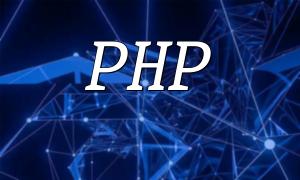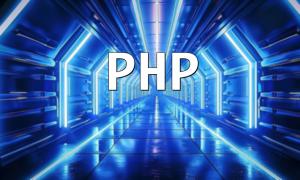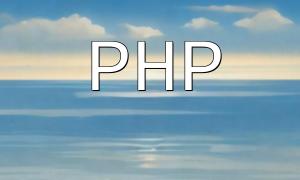Container orchestration refers to defining and managing a set of containers' operational rules and network configurations to implement application deployment and management. In PHP applications, common container orchestration tools include Docker and Kubernetes.
Docker is a lightweight virtualization technology that uses containers to package and deploy applications. Docker provides a set of commands and configuration files that define how the application is packaged and its runtime environment. Through Docker container orchestration, we can quickly create and start PHP containers, and automate deployment and management.
Here’s an example of using Docker for PHP container orchestration:
# Dockerfile # Specify the base image FROM php:7.4-apache # Install PHP extensions RUN docker-php-ext-install mysqli pdo_mysql # Copy application code into the container COPY . /var/www/html # Set the working directory for the container WORKDIR /var/www/html # Expose the container's 80 port EXPOSE 80 # Start Apache server CMD ["apache2-foreground"]
With the above Dockerfile, we can build an image with PHP 7.4 and the Apache server, copy the application code into the container, and finally use the CMD instruction to start the Apache service.
Kubernetes is an open-source container orchestration platform that helps better manage and scale containerized applications. In Kubernetes, we can define the number of application replicas, resource limits, and network configurations, and use Kubernetes schedulers to automate container deployment and management.
Here’s an example of using Kubernetes for PHP container orchestration:
# deployment.yaml
apiVersion: apps/v1
kind: Deployment
metadata:
name: php-app
spec:
replicas: 3
selector:
matchLabels:
app: php-app
template:
metadata:
labels:
app: php-app
spec:
containers:
- name: php-app
image: php:7.4-apache
ports:
- containerPort: 80
volumeMounts:
- name: app-data
mountPath: /var/www/html
volumes:
- name: app-data
emptyDir: {}
With the above deployment.yaml file, we define the deployment of a PHP application with 3 replicas. Each replica uses the php:7.4-apache image and mounts the /var/www/html directory as a shared volume.
Service orchestration refers to defining and managing the operational status and network access rules of a group of containers to implement service discovery and load balancing. In PHP applications, common service orchestration tools include Docker Compose and Kubernetes.
Docker Compose is a tool for defining and running multiple Docker containers. It allows us to define the relationships and dependencies between multiple containers through a single configuration file. Using Docker Compose for service orchestration, we can quickly create and start related PHP containers, and define their network connections and service discovery.
Here’s an example of using Docker Compose for PHP service orchestration:
# docker-compose.yaml
version: '3'
services:
php-app:
build:
context: .
dockerfile: Dockerfile
ports:
- 8080:80
volumes:
- .:/var/www/html
depends_on:
- mysql
mysql:
image: mysql:5.7
environment:
- MYSQL_ROOT_PASSWORD=secret
- MYSQL_DATABASE=php_app_db
With the above docker-compose.yaml file, we define a service orchestration containing both the PHP application and the MySQL database. The PHP application is built using the defined Dockerfile, and the local code directory is mounted into the container. The MySQL service is created using the mysql:5.7 image and configured with environment variables for the database password and name.
In Kubernetes, we can use Services and Ingress to implement container service discovery and load balancing. Services define network connection rules between containers, while Ingress defines external access rules to container services.
Here’s an example of using Kubernetes for PHP service orchestration:
# service.yaml
apiVersion: v1
kind: Service
metadata:
name: php-app-service
spec:
selector:
app: php-app
ports:
- protocol: TCP
port: 80
targetPort: 80
type: NodePort
With the above service.yaml file, we define a Service object named php-app-service, which forwards external network traffic to containers labeled as app: php-app. The service is exposed on port 80 and set as a NodePort type, allowing access to the PHP application via the cluster node's IP address and exposed port.
Container orchestration and service orchestration play a critical role in PHP application packaging and deployment. Through container orchestration, we can quickly create and manage PHP containers, defining the application’s runtime environment and configurations. Through service orchestration, we can implement service discovery and load balancing for PHP containers, improving the application’s availability and performance.
Whether using Docker or Kubernetes, container orchestration and service orchestration help achieve efficient deployment and management of PHP applications. We hope the explanations and examples above help you understand and apply container and service orchestration in your development process.










